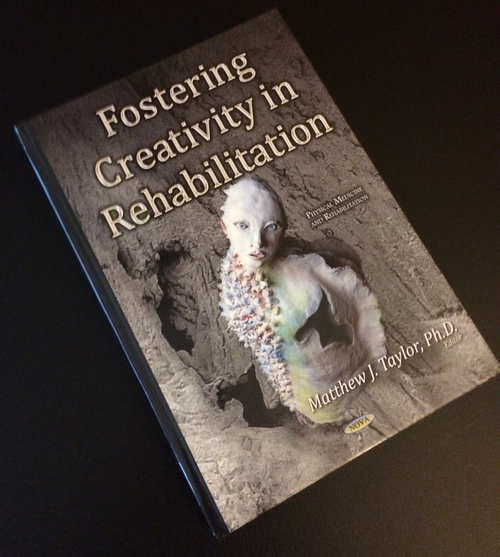Fostering Creativity in Rehabilitation

This textbook is a scholarly guide for fostering creativity in the rehabilitation professions. The process of both insight and implementation is made clear and is rooted in evidence-based practice. The principles are demonstrated by autobiographical accounts of professional peers who have created new rehabilitation practices in the real world. The book concludes with four action-oriented chapters that will transform practices.

Unfortunately, in the process of “creating” the textbook, I, the editor failed to negotiate the final sale price of the book, so it’s pricey, even in the softcover version ($89.00 USD). If you are interested in accessing the book, please contact me directly as I have some copies I can release at a lower price. As the book teaches…”The idea is the easy part…the implementation is where things get tricky.” …and so I learned.
Who?
As the editor, I sought out colleagues that shared my passion for our professions and realize our collective need to advance the evolution of rehabilitation. This evolution I coined in the book as “rehabbing rehab.” Together we’ve shared a new understanding of creativity from both a scholarly perspective AND our on the ground, real-world creative experiences. We hope YOU become part of the “Who?” by reading it and engaging the practices in the application chapters!
What?
This textbook is a blend of academic theory, practical experience and embodied practices to prime your creativity and compassion.
Why?
We believe that now is the time to embrace the new sciences of complexity and creativity to advance our professions into the next evolution of true “health” care vs. the historic sickcare. Our ordinary everyday creativity fuels the larger systems of transformational change, so each of us is essential. This won’t happen through our associations or schools (see Elgelid’s brilliant Chapter 5). This evolution is our charge. It is time to reclaim the dignity of our vocations in the spirit of Dr. Berwick’s quote below:
“The more commonplace claim that we don’t now have systems to create health is also correct… Here is the rub: the new way, the way to health, may be vastly further from the current design of care than we may at first wish it to be, or believe it to be.”
— Donald Berwick, MD, CEO and founder of the Harvard-based Institute for Health Improvement, 2014.
How?
This textbook can be used in graduate classrooms, local study groups, organizational inservices or private study. In the future there will be a virtual community to meet up with like-minded colleagues. Let us know the creative ways you make use of the material.
What is in it for you?
We hope our work will serve to sustain or re-kindle your passion for easing suffering not just in your vocation, but in this grand adventure of life we are all on together navigating the seas of uncertainty that mark our place in history.
Here’s the less poetic intention….
Rehabilitation professionals that read this textbook and utilize the exercises should be able to:
1. Describe and discuss creativity as it applies to rehabilitation, its historical context, present-day misunderstandings, and how to harness the creative process in their practice and profession.
2. Confidently share the importance of creativity at both local and larger scales within their profession to inspire further investigation and conversation about generating better futures.
3. As either graduate students or experienced professionals, identify and appreciate their own unique creativity and the creativity of the patients or students they serve.
4. Point to specific examples of colleagues expressing their creativity in rehabilitation based on the shared case reports.
5. Demonstrate and perform the practices that build the skills needed by providers and patients to prime the creative process and enact it in their unique circumstance.

